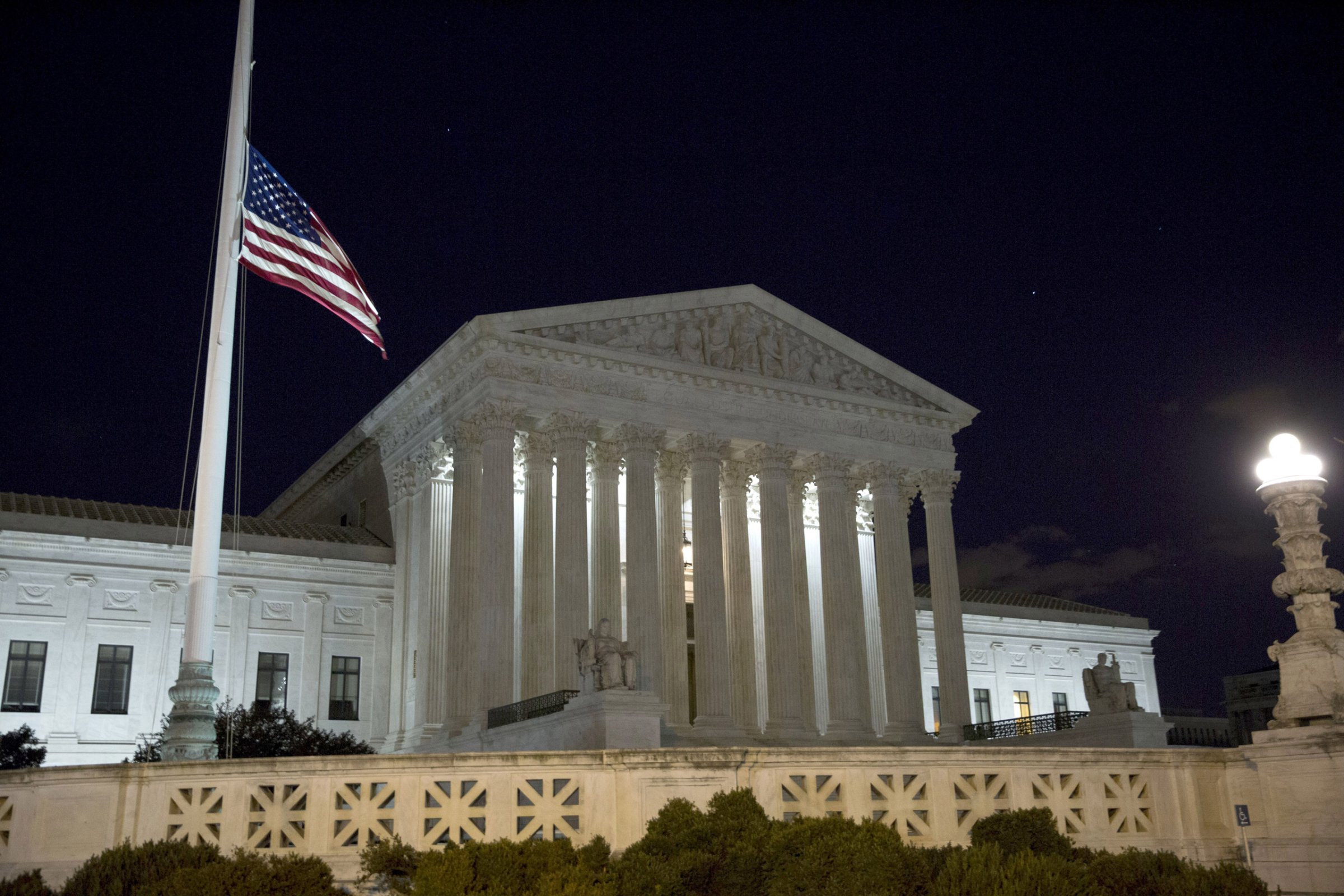
The death of Justice Antonin Scalia at age 79 raises a lot of questions, including how decisions of the U.S. Supreme Court go forward as the process to nominate his successor begins. Without nine justices, there is the potential for a 4-4 tie.
Supreme Court ties aren’t unprecedented; justices have recused themselves from the bench for various reasons throughout history. When it happens, the lower court ruling stands and no precedent is set.
In the paper “Ties in the Supreme Court of the United States,” published in the William & Mary Law Review, Edward Hartnett writes:
The traditional practice of the Supreme Court of the United States is that “no affirmative action can be had in a cause where the judges are equally divided in opinion as to the judgment to be rendered or order to be made. Although equal divisions on today’s nine-member Court result from recusals, absences, or vacancies, such equal divisions can result on a full bench if Congress sets the size of the Supreme Court at an even number, as it did from 1789 until 1807, and from 1863 until 1866.
TIME’s Massimo Calabresi has explained how the conservative justice’s death will impact the court’s pending cases.
More Must-Reads from TIME
- Cybersecurity Experts Are Sounding the Alarm on DOGE
- Meet the 2025 Women of the Year
- The Harsh Truth About Disability Inclusion
- Why Do More Young Adults Have Cancer?
- Colman Domingo Leads With Radical Love
- How to Get Better at Doing Things Alone
- Michelle Zauner Stares Down the Darkness
Contact us at letters@time.com